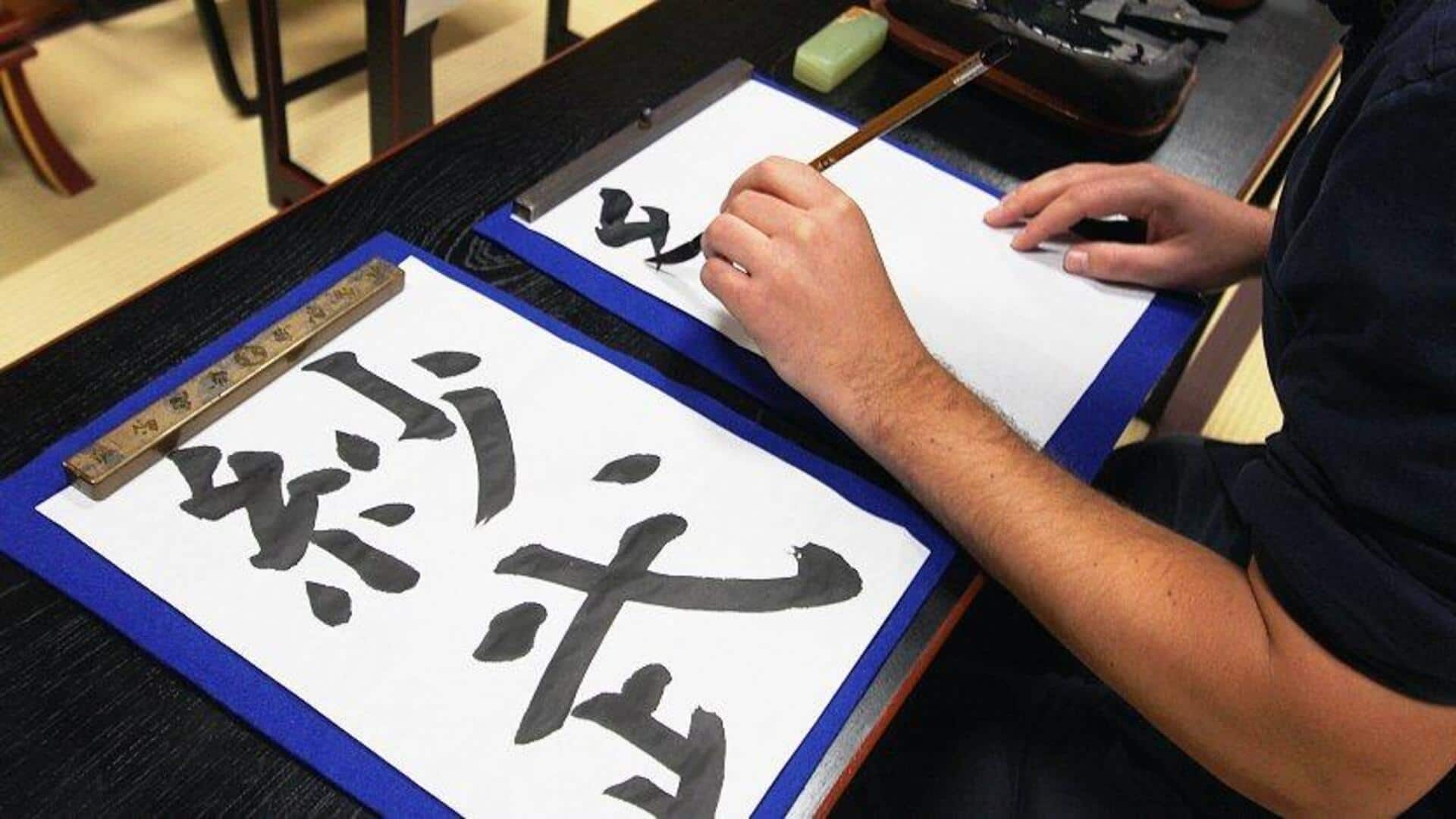
5 fascinating aspects of Japanese calligraphy art
What's the story
Japanese calligraphy, or shodo, is an ancient art that marries beauty with precision. From writing beautiful characters to expressing one's emotions, from capturing the essence of words to making them glow, this art requires a master-stroke. It involves a deep understanding of brush, ink, character balance, etc. Each stroke in Japanese calligraphy has meaning and reflects the artist's state of mind. Here are five subtle nuances that define this intricate art.
Brush technique
The importance of brush pressure
In Japanese calligraphy, the pressure applied to the brush plays a crucial role in determining the thickness and texture of every stroke. A light touch produces thin lines, while additional pressure creates thicker strokes. Mastering this technique allows artists to express different emotions through their work.
Ink flow
The role of ink consistency
In Japanese calligraphy, ink viscosity is everything. Thick ink gives bold, assertive strokes, while more diluted gives soft, subtle lines. Artists have to control how ink flows so that every stroke harmonizes with the next one. They create compositions that balance strength and delicacy. This manipulation of ink consistency is key to achieving aesthetic and emotional depth in their art.
Character structure
Understanding character balance
In Japanese calligraphy, character balance is not just important, it's key to creating captivating and eye-pleasing pieces. Every character has to be not only proportionate but also perfectly aligned in its allotted space on the paper. This delicate balance requires not only practice but also an acute eye for detail. Artists spend years mastering this aspect, making every piece they create a testament to their skill and dedication.
Negative space
The significance of blank space
In the world of Japanese calligraphy, blank space, or negative space, is just as important as the characters. It provides the necessary breathing room for each stroke, adding to the overall composition. This deliberate use of empty space emphasizes the focal points of the artwork without making it feel cluttered. It's a fine line that artists must tread to render visually stunning and balanced pieces.
Emotional expression
Expressing emotion through strokes
Every stroke in shodo, the Japanese art of calligraphy has the potential to be an emotional expression depending on how you write it, whether it's straight or curved. Whether calmness through gentle curves or intensity via sharp angles, every line tells a story beyond the words written down on paper.